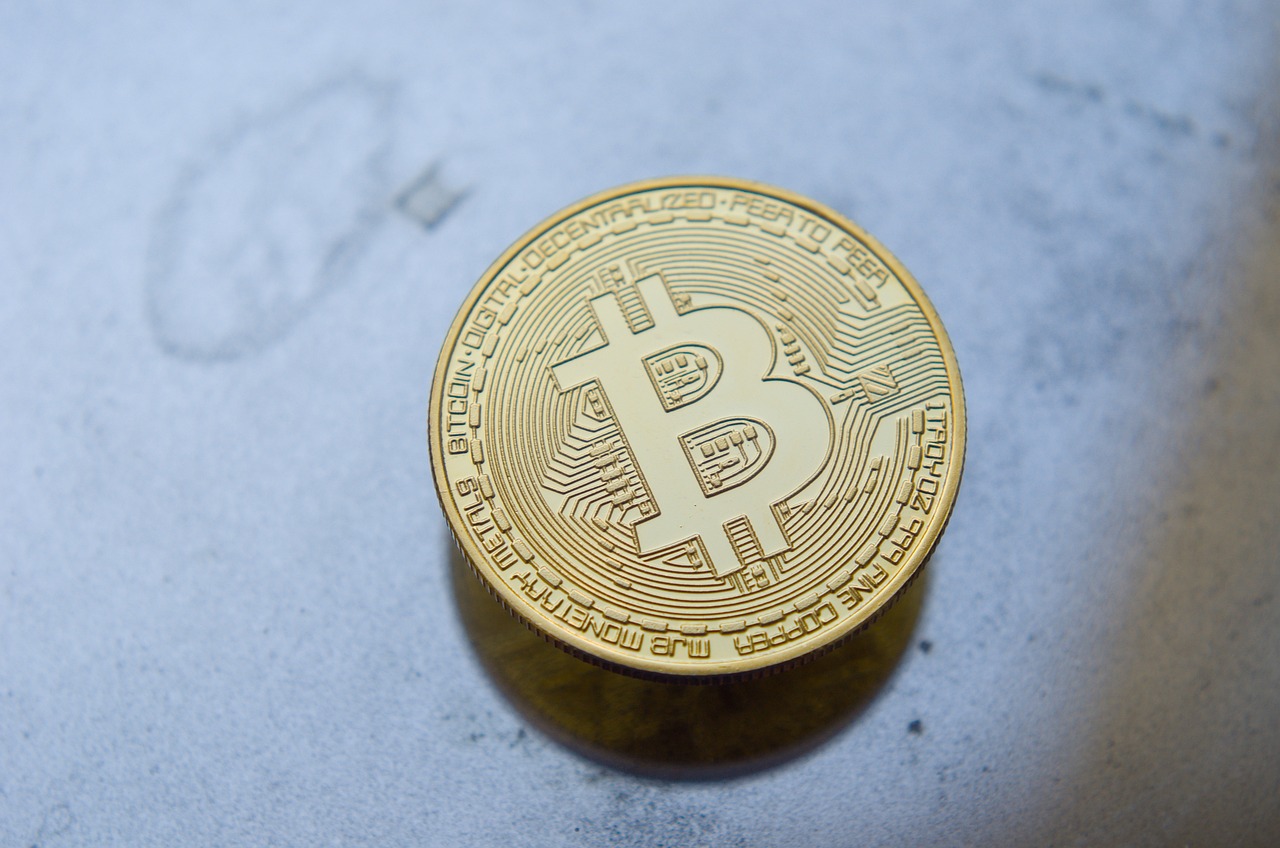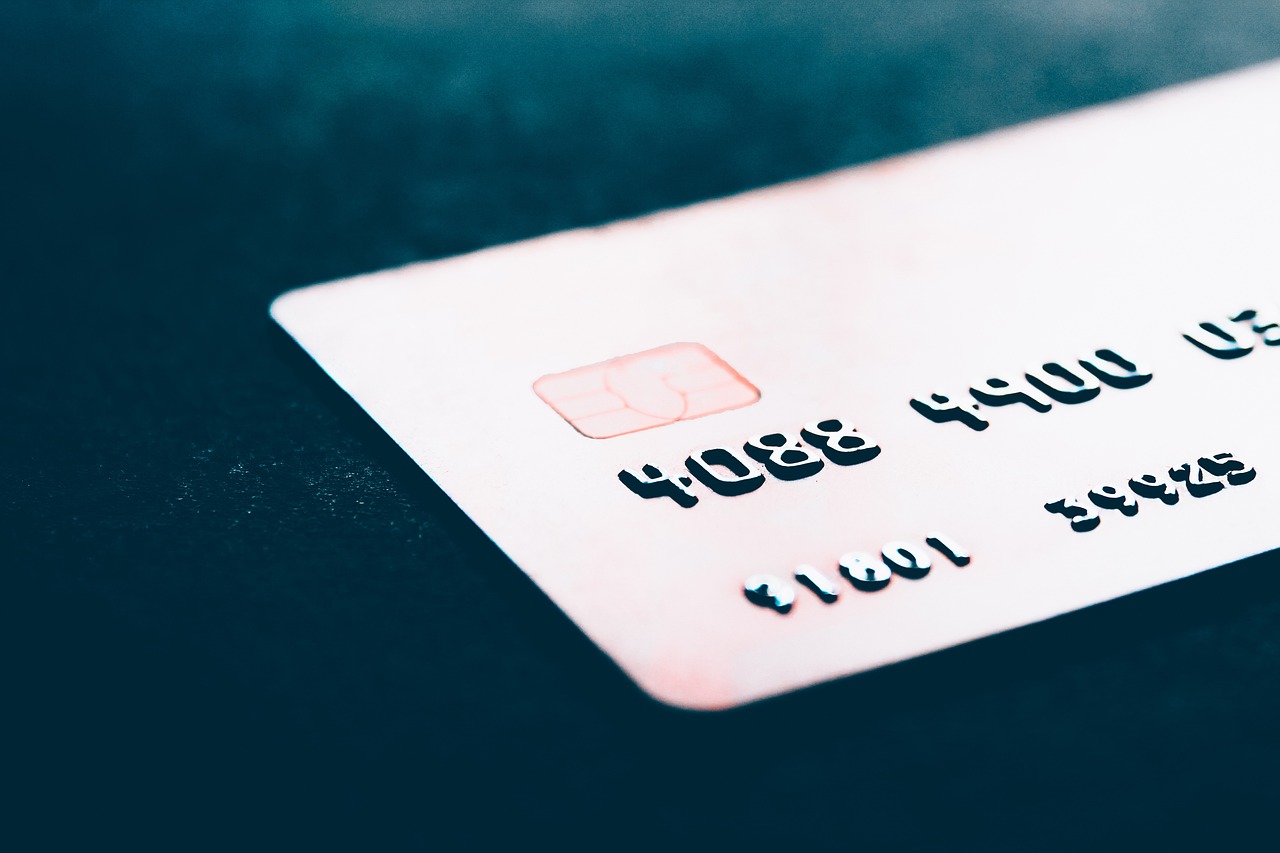The Influence of Payment Platforms on Market Growth
In today's fast-paced world, the way we handle money has undergone a seismic shift. Payment platforms have emerged as the unsung heroes of this transformation, playing a pivotal role in shaping market dynamics, consumer behavior, and economic trends. Just think about it: a few years ago, the idea of making a purchase with a simple tap on your smartphone seemed like something out of a sci-fi movie. Now, it's a reality that is driving growth across various sectors.
These platforms, ranging from traditional credit card processors to innovative mobile wallets and cryptocurrencies, have not only made transactions easier but have also created an ecosystem that encourages spending. By providing seamless, secure, and swift payment options, they instill confidence in consumers, leading to an uptick in sales and market expansion. It's almost as if they are the fuel that keeps the engine of commerce running smoothly.
Imagine walking into a store, picking up your favorite items, and checking out without fumbling for cash or cards. That's the magic of payment platforms! They have redefined convenience, allowing consumers to focus on what they love—shopping—while the backend technology takes care of the rest. This convenience is particularly crucial in the age of e-commerce, where every second counts, and the competition is just a click away.
Moreover, payment platforms have democratized access to markets. Small businesses can now compete with larger corporations by offering the same payment options that big players provide. This level playing field fosters innovation and drives economic growth, as more entrepreneurs are encouraged to enter the market. As these platforms evolve, they continue to break down barriers, making it easier for consumers and businesses alike to engage in commerce.
In essence, payment platforms are not just tools for transactions; they are catalysts for economic development. They influence consumer behavior, shape market trends, and pave the way for new business models. As we delve deeper into the intricacies of these platforms, we will uncover how they are transforming the landscape of commerce and what the future holds for this dynamic industry.
- What are payment platforms? Payment platforms are digital services that facilitate financial transactions, allowing consumers and businesses to send and receive money electronically.
- How do payment platforms impact consumer behavior? They enhance convenience and security, which can lead to increased consumer confidence and higher spending.
- What challenges do payment platforms face? Common challenges include regulatory compliance, security threats, and intense market competition.
- What is the future of payment platforms? Emerging technologies such as cryptocurrency, blockchain, and AI are expected to further revolutionize the payment landscape.

Payment Platforms: A Brief Overview
In today's fast-paced digital world, payment platforms have become essential tools that facilitate financial transactions across various sectors. These platforms are designed to streamline the payment process, making it easier for consumers and businesses alike. At their core, payment platforms can be categorized into several types, each serving unique functionalities that cater to different needs.
There are primarily three types of payment platforms: traditional payment gateways, mobile wallets, and cryptocurrency platforms. Traditional payment gateways, like PayPal and Stripe, allow businesses to accept credit card payments online, providing a secure way to process transactions. On the other hand, mobile wallets, such as Apple Pay and Google Wallet, enable users to make purchases using their smartphones, offering unparalleled convenience and speed. Lastly, cryptocurrency platforms, including Coinbase and Binance, have emerged as revolutionary alternatives, allowing users to transact using digital currencies like Bitcoin and Ethereum.
The significance of these platforms in the modern economy cannot be overstated. They not only enhance the efficiency of transactions but also foster consumer trust and confidence. For instance, the integration of advanced security features, such as encryption and two-factor authentication, ensures that sensitive information remains protected. This level of security is crucial in an era where data breaches are all too common, and consumers are increasingly concerned about their privacy.
Moreover, payment platforms play a pivotal role in the growth of e-commerce. By simplifying the payment process, they encourage consumers to complete their purchases, which ultimately drives sales for businesses. The convenience of having multiple payment options at checkout can significantly reduce cart abandonment rates, a common issue faced by online retailers.
As we delve deeper into the influence of these payment platforms, it becomes clear that their impact extends beyond mere transactions. They are reshaping consumer behavior, influencing market dynamics, and driving economic trends. The ability to make quick and secure payments has not only changed how we shop but has also opened up new avenues for businesses to reach a global audience.
In summary, payment platforms are more than just tools for financial transactions; they are catalysts for change in the modern economy. Their diverse functionalities and growing significance illustrate how essential they are in driving growth across various sectors. As we continue to explore their influence, it’s important to understand the challenges they face and the future trends that may further shape their evolution.

The Role of Digital Payments in E-commerce
Digital payment platforms have truly revolutionized the e-commerce landscape, acting as the backbone of online transactions. Gone are the days when consumers hesitated to purchase items online due to concerns about transaction safety and speed. Today, with just a few clicks or taps, customers can complete their purchases seamlessly. This transformation has not only improved transaction speed but has also significantly enhanced security, fostering greater consumer confidence in online shopping.
The impact of digital payments on e-commerce is profound. For instance, studies show that businesses that integrate efficient payment solutions often experience a surge in sales. Why? Because when customers find it easy to pay, they are more likely to complete their purchases. Imagine walking into a store and having to wait in line for ages just to pay; frustrating, right? The same principle applies online. If a customer encounters a cumbersome payment process, they may abandon their cart, leading to lost sales.
Moreover, digital payments have paved the way for innovative payment methods. From credit cards to mobile wallets and even cryptocurrencies, the options available today cater to diverse consumer preferences. This variety not only meets the needs of different demographics but also encourages global shopping. Consumers can now purchase products from around the world without worrying about currency conversion hassles or payment security issues.
Consumer confidence is another significant factor influenced by digital payments. With robust security features like encryption, tokenization, and fraud detection, customers feel more secure when making online transactions. This trust is crucial in driving repeat purchases, as satisfied customers are likely to return for more. In fact, research indicates that businesses with secure payment options enjoy higher customer loyalty and retention rates.
Additionally, the integration of digital payments with e-commerce platforms has facilitated personalized shopping experiences. For instance, many platforms now offer tailored recommendations based on previous purchases, making it easier for consumers to find what they need. This not only enhances the shopping experience but also encourages additional spending.
In conclusion, the role of digital payments in e-commerce cannot be overstated. They have transformed how we shop, making transactions faster, safer, and more convenient. As technology continues to evolve, we can expect even more innovations that will further enhance the online shopping experience. Whether you're a business owner looking to boost sales or a consumer enjoying the convenience of online shopping, the influence of digital payments is undeniable.

Mobile Wallets and Consumer Behavior
Mobile wallets have transformed the way consumers interact with their finances and make purchases. Imagine walking into a store and not having to fumble through your pockets for cash or cards; instead, you simply whip out your smartphone and complete the transaction in seconds. This convenience has changed consumer behavior dramatically, making shopping not just easier but also more enjoyable. The rise of mobile wallets like Apple Pay, Google Wallet, and others has introduced a new era of payment methods that cater to the fast-paced lifestyle many of us lead.
One of the most significant impacts of mobile wallets is their ability to enhance consumer confidence. With features like encryption, tokenization, and biometric authentication, users feel more secure knowing that their financial information is protected. This sense of security encourages more frequent use of mobile payments, leading to increased sales for retailers. In fact, studies show that consumers who use mobile wallets are more likely to make impulsive purchases, driven by the ease and speed of the transaction process.
Moreover, mobile wallets have changed the landscape of shopping habits. They allow for seamless integration with loyalty programs and promotional offers, which can be a game-changer for both consumers and businesses. For instance, when a customer pays with a mobile wallet, they can automatically apply discounts or earn rewards without the hassle of carrying physical cards. This not only enhances the shopping experience but also encourages brand loyalty, as consumers are more likely to return to businesses that offer such conveniences.
Interestingly, the influence of mobile wallets extends beyond just convenience; it also taps into the psychological aspects of spending. The instant gratification that comes with mobile payments can lead to an increase in impulse buying. When consumers have the ability to make quick transactions, they may be more likely to purchase items they hadn’t initially planned to buy. This phenomenon can significantly boost overall sales for retailers, especially during promotional events or holiday seasons.
To illustrate the impact of mobile wallets on consumer behavior, consider the following table:
| Consumer Behavior Change | Impact of Mobile Wallets |
|---|---|
| Increased Frequency of Purchases | Mobile wallets facilitate quick transactions, leading to more shopping trips. |
| Higher Impulse Buying Rates | The ease of payment can trigger unplanned purchases. |
| Enhanced Brand Loyalty | Integration with loyalty programs encourages repeat purchases. |
As we look to the future, it's clear that mobile wallets will continue to shape consumer behavior in profound ways. The convenience, security, and integration of these digital payment methods make them an integral part of the shopping experience. Retailers who embrace this technology will not only meet the demands of modern consumers but also position themselves for growth in an increasingly competitive market.
- What are mobile wallets? Mobile wallets are digital applications that allow consumers to store payment information and make transactions using their smartphones.
- How do mobile wallets enhance security? They use encryption, tokenization, and biometric authentication to protect user data.
- Can mobile wallets influence impulse buying? Yes, the convenience of mobile payments can lead to increased unplanned purchases.
- Are mobile wallets widely accepted? Most retailers now accept mobile payments, making them a popular choice among consumers.

Security Features of Mobile Wallets
In today's fast-paced digital world, where convenience often trumps caution, the security features of mobile wallets have become a paramount concern for users and providers alike. Mobile wallets, such as Apple Pay, Google Pay, and Samsung Pay, have transformed the way we handle transactions, but with this transformation comes the critical need to ensure that sensitive information is protected. Imagine walking around with a wallet that not only holds your cash but also your personal data, and realizing that if it falls into the wrong hands, it could lead to identity theft and financial loss. This is why robust security measures are essential.
One of the primary security features of mobile wallets is encryption. When you make a transaction, your payment information is encrypted, meaning it is converted into a secure format that is unreadable to anyone who does not have the decryption key. This is akin to sending a letter in a locked box; only the intended recipient can open it. Additionally, many mobile wallets utilize tokenization, which replaces your actual card details with a unique identifier or token. This way, even if hackers intercept the transaction data, they are left with useless tokens instead of your personal information.
Another critical aspect is biometric authentication. Most mobile wallets now support fingerprint scanning or facial recognition, adding an extra layer of security. This means that even if someone manages to steal your phone, they would still need your unique biometric data to access your wallet. It's like having a personal bodyguard that only allows you in. Furthermore, many mobile wallets offer two-factor authentication (2FA), which requires users to provide two different forms of identification before completing a transaction. This could involve entering a password and confirming a code sent to your phone, making unauthorized access significantly more challenging.
Moreover, the real-time transaction alerts feature is invaluable. Users receive notifications for every transaction made, allowing them to quickly identify any unauthorized activity. This immediate feedback loop acts like a security alarm, alerting you to potential threats before they escalate. In the unfortunate event of a lost or stolen device, mobile wallets typically provide options to remotely disable the wallet, ensuring that your financial information remains secure.
In summary, the security features of mobile wallets are designed to create a safe and seamless payment experience. These measures not only protect users from fraud but also enhance consumer confidence in digital transactions. As mobile wallets continue to evolve, we can expect even more advanced security protocols to emerge, ensuring that our financial data remains as secure as possible in this ever-changing digital landscape.
- What is tokenization in mobile wallets? Tokenization replaces sensitive card information with a unique token, making it useless if intercepted.
- How does biometric authentication work? It uses fingerprint scanning or facial recognition to verify the user’s identity before allowing access to the wallet.
- What should I do if I lose my phone with a mobile wallet? Most mobile wallets allow you to disable the wallet remotely to protect your information.
- Are mobile wallets safe for online transactions? Yes, they use advanced security features like encryption, tokenization, and real-time alerts to protect user data.

Impact on Impulse Buying
In today's fast-paced digital world, the convenience of mobile payments has dramatically transformed the way consumers shop, leading to a significant rise in impulse buying. Imagine walking through a store, spotting a trendy gadget or a stylish outfit, and with just a quick tap on your smartphone, the purchase is complete. This instant gratification is a game changer! The ease of mobile payments allows consumers to act on their whims without the usual hesitation that comes with traditional payment methods.
According to recent studies, the availability of mobile payment options has led to a staggering 30% increase in unplanned purchases during online shopping sessions. Why does this happen? Well, it boils down to a few key factors:
- Speed: Mobile wallets facilitate instant transactions. The quicker the checkout process, the less time a consumer has to reconsider their purchase.
- Accessibility: With mobile payments, consumers can shop anytime and anywhere, making it easier to indulge in spontaneous buys.
- Personalization: Many mobile payment platforms offer tailored recommendations based on user behavior, further enticing consumers to make unplanned purchases.
This phenomenon isn't just limited to online shopping; it also extends to brick-and-mortar stores. Retailers are increasingly adopting mobile payment solutions, enabling customers to complete transactions swiftly, often leading to those 'just one more item' moments at checkout. Think about it: when you're already at the register, and you see that delicious snack or a trendy accessory right next to the cashier, the frictionless payment experience can easily tip the scale towards an impulsive buy.
However, while impulse buying can boost sales for retailers, it also raises questions about consumer behavior and financial health. Are consumers aware of their spending habits, or are they simply swept away by the convenience of mobile payments? It’s crucial for consumers to remain mindful of their budgets and recognize the triggers that lead to impulse buys. Retailers, on the other hand, must strike a balance between leveraging this trend for profit and promoting responsible spending among their customers.
In conclusion, the impact of mobile payments on impulse buying is profound and multifaceted. As we continue to embrace digital payment solutions, both consumers and retailers must navigate this landscape thoughtfully. Understanding the psychology behind impulse buying can help consumers make informed choices while allowing retailers to optimize their strategies for maximum impact.
- What is impulse buying? Impulse buying refers to unplanned purchases made on a whim, often driven by emotions or immediate desires.
- How do mobile payments influence impulse buying? Mobile payments offer convenience and speed, reducing the time consumers have to reconsider their purchases, which often leads to more impulse buys.
- Are there any downsides to impulse buying? Yes, while it can be exciting, impulse buying can lead to overspending and financial strain if not managed properly.
- How can consumers control impulse buying? Setting budgets, being mindful of spending triggers, and using apps to track expenses can help consumers maintain control over their purchases.

Cross-Border Transactions and Global Markets
In today's interconnected world, cross-border transactions have become a vital component of global commerce. Payment platforms are the unsung heroes that facilitate these transactions, allowing businesses and consumers to engage in trade without the limitations of geographical boundaries. Imagine a small artisan in Italy selling handcrafted goods to a customer in Japan with just a few clicks—this is the power of modern payment solutions.
As we delve deeper into the impact of payment platforms on cross-border transactions, it's essential to recognize the myriad of benefits they bring to the table. For one, they significantly reduce transaction times. Traditional methods of international payment, such as wire transfers, can take days to process. However, digital payment platforms can often complete transactions in mere seconds. This speed not only enhances the customer experience but also allows businesses to operate more efficiently, making timely decisions based on real-time data.
Moreover, payment platforms often offer competitive exchange rates, which can be a game-changer for businesses looking to expand their reach. By minimizing conversion fees and providing transparent pricing, these platforms empower companies to enter new markets with confidence. For instance, a company in Brazil can seamlessly sell its products to consumers in Europe, navigating currency differences without breaking the bank.
However, it's not just about speed and cost; trust and security play a crucial role in cross-border transactions. Consumers are more likely to engage in international purchases when they feel secure about their payment methods. Payment platforms invest heavily in security measures, such as encryption and fraud detection, to protect users from potential threats. This commitment to safety fosters a sense of trust, encouraging more consumers to explore global markets.
Additionally, the rise of mobile payment solutions has made cross-border transactions even more accessible. With just a smartphone, users can make purchases from anywhere in the world. This accessibility is particularly beneficial for emerging markets, where traditional banking infrastructure may be lacking. Payment platforms are bridging this gap, allowing individuals and businesses in developing regions to participate in the global economy.
To illustrate the impact of cross-border transactions facilitated by payment platforms, consider the following table:
| Aspect | Traditional Methods | Payment Platforms |
|---|---|---|
| Transaction Time | 1-5 days | Seconds to minutes |
| Fees | High | Competitive |
| Security | Variable | High (encryption, fraud detection) |
| Accessibility | Limited | Global |
In summary, the influence of payment platforms on cross-border transactions cannot be overstated. They are not just tools for transferring money; they are enablers of global commerce, driving economic growth and fostering international relationships. As these platforms continue to evolve, we can expect even greater innovations that will further simplify and enhance the way we conduct business across borders.
- What are cross-border transactions? Cross-border transactions refer to any financial activity that involves parties from different countries, such as purchasing goods or services internationally.
- How do payment platforms facilitate cross-border transactions? Payment platforms streamline the process by providing fast, secure, and cost-effective solutions for transferring funds across borders.
- What security measures do payment platforms implement? Payment platforms typically use encryption, two-factor authentication, and fraud detection systems to protect users during transactions.
- Can small businesses benefit from cross-border transactions? Absolutely! Payment platforms allow small businesses to reach international customers, increasing their market potential significantly.

Challenges Faced by Payment Platforms
In the rapidly evolving world of payment platforms, the journey is not without its bumps. While these platforms have transformed the way we conduct transactions, they also face a myriad of challenges that can impede their growth and efficiency. One of the most pressing issues is regulatory compliance. Payment platforms operate in a complex web of regulations that vary by region and often change with little warning. This can create a daunting landscape for businesses trying to navigate the legal requirements necessary to operate. For instance, platforms must ensure they are adhering to anti-money laundering (AML) laws, data protection regulations like GDPR, and various consumer protection laws. Failing to comply can result in hefty fines and even loss of operating licenses, which can be detrimental to their market presence.
Another significant challenge is the constant threat of security breaches. As payment platforms handle sensitive financial information, they become prime targets for cybercriminals. The stakes are high; a single data breach can not only lead to financial losses but can also erode consumer trust. To combat this, payment platforms are investing heavily in security technologies, such as encryption and tokenization, but the evolving nature of cyber threats means that they must remain vigilant and proactive.
Furthermore, the competitive landscape is fierce. With numerous players entering the market, maintaining a competitive edge is crucial. Payment platforms must continuously innovate and enhance their offerings to attract and retain customers. This includes not only improving user experience but also expanding functionalities to include features like loyalty rewards, instant transfers, and integration with other financial services. The challenge lies in balancing these innovations with the need to keep costs manageable, as higher fees can deter potential users.
In addition to these challenges, payment platforms also face consumer skepticism. Even with advancements in technology, many consumers remain wary of online transactions due to fears of fraud or identity theft. This skepticism can hinder the adoption of new payment methods, particularly among older demographics who may prefer traditional payment options. To address this, payment platforms need to invest in consumer education, demonstrating the safety and convenience of their services.
Despite these challenges, the future of payment platforms looks promising. By addressing regulatory hurdles, enhancing security measures, staying competitive, and building consumer trust, these platforms can continue to thrive in a dynamic market. The key will be their ability to adapt and evolve in response to both challenges and opportunities.
- What are the main challenges faced by payment platforms?
Payment platforms face challenges such as regulatory compliance, security threats, market competition, and consumer skepticism.
- How do payment platforms ensure security?
They implement various security measures like encryption, tokenization, and continuous monitoring to protect user data.
- Why is regulatory compliance important for payment platforms?
Compliance is crucial to avoid legal penalties, maintain operational licenses, and build consumer trust.
- What can consumers do to protect themselves when using payment platforms?
Consumers should use strong passwords, enable two-factor authentication, and stay informed about the security measures of the platforms they use.

Regulatory Compliance Issues
In the fast-paced world of payment platforms, regulatory compliance stands as a towering challenge that can dictate the success or failure of a business. As these platforms operate across various jurisdictions, they must adhere to a myriad of laws and regulations that can often be complex and ever-changing. Think of it like trying to navigate a maze—one wrong turn can lead to significant penalties, loss of consumer trust, or even a shutdown of operations.
One of the primary hurdles payment platforms face is the need to comply with anti-money laundering (AML) and know your customer (KYC) regulations. These requirements are designed to prevent financial crimes, but they also impose rigorous verification processes on users. For instance, platforms must collect and verify personal information such as names, addresses, and identification numbers, which can deter potential users who seek a seamless experience. The balance between security and user convenience is a delicate one, and failing to strike it can lead to lost revenue.
Moreover, the global nature of these platforms means they often have to grapple with different regulatory environments in each country they operate. For example, the European Union has stringent data protection laws under the General Data Protection Regulation (GDPR), which mandates that companies handling personal data must implement strict security measures and provide transparency to users. This can complicate operations for payment platforms, requiring them to invest heavily in compliance infrastructure.
To illustrate the complexity, here's a table summarizing some of the key regulatory challenges faced by payment platforms:
| Regulation | Key Requirements | Impact on Payment Platforms |
|---|---|---|
| AML | Monitoring transactions, verifying user identities | Increased operational costs, potential user drop-off |
| KYC | Collecting and verifying personal information | Time-consuming processes, user friction |
| GDPR | Data protection, user consent | Higher compliance costs, risk of fines |
In addition to these challenges, payment platforms also face the risk of non-compliance penalties, which can be hefty. Regulatory bodies are increasingly vigilant, and companies caught in violation can incur fines that reach into the millions. For instance, a payment platform that fails to adhere to KYC regulations may not only face fines but also damage its reputation, leading to a loss of trust among consumers. This is particularly detrimental in a market where consumer trust is paramount.
Furthermore, as technology evolves, so do the regulations. Payment platforms must remain agile, continually updating their compliance strategies to keep pace with new laws and standards. This includes investing in advanced technologies such as artificial intelligence and machine learning to enhance their compliance processes. By automating aspects of compliance, platforms can reduce the burden on their teams while improving accuracy and efficiency.
In conclusion, while payment platforms are essential to modern commerce, their success hinges on their ability to navigate the intricate landscape of regulatory compliance. The challenges are significant, but with proactive strategies and a commitment to transparency, these platforms can not only survive but thrive in a competitive market.
- What are the main regulatory challenges for payment platforms?
Payment platforms face challenges such as AML and KYC compliance, GDPR adherence, and the need to navigate various international regulations. - How do compliance issues affect user experience?
Stricter compliance may lead to longer verification processes, potentially discouraging users who prefer quick and seamless transactions. - What technologies can help with regulatory compliance?
Advanced technologies like artificial intelligence and machine learning can automate compliance processes, reducing manual work and increasing accuracy.

Security Threats and Solutions
In today's digital landscape, payment platforms face a myriad of security threats that can undermine user trust and jeopardize financial transactions. From data breaches to phishing scams, the potential risks are as varied as they are alarming. For instance, hackers often exploit vulnerabilities in payment systems, targeting sensitive customer information like credit card details and personal identification numbers. This not only affects the individuals involved but can also have a ripple effect on the businesses that rely on these platforms. The stakes are high, and the consequences of inadequate security can be devastating.
One of the most significant threats is data breaches. These incidents can lead to the unauthorized access of vast amounts of sensitive information, leaving consumers vulnerable to fraud. According to recent statistics, nearly 60% of small businesses that experience a data breach close their doors within six months. This highlights the urgent need for robust security measures. Payment platforms must continuously evolve their defenses to keep pace with the ever-changing tactics employed by cybercriminals.
To combat these threats, payment platforms are implementing a range of security solutions designed to protect users and their data. Here are some common strategies:
- Encryption: This technology scrambles sensitive data, making it unreadable to unauthorized users. It’s like putting your valuables in a safe; even if someone breaks in, they can’t access what’s inside.
- Two-Factor Authentication (2FA): By requiring an additional verification step, such as a text message code, 2FA adds an extra layer of security. It’s akin to needing both a key and a password to enter a secure building.
- Regular Security Audits: Conducting frequent assessments of security protocols helps identify vulnerabilities before they can be exploited. Think of it as a routine check-up for your digital health.
- Fraud Detection Systems: Advanced algorithms analyze transaction patterns to detect and flag suspicious activity in real time. This proactive approach is like having a security guard monitoring the premises 24/7.
Moreover, educating users about potential threats is crucial. Many breaches occur due to user negligence, such as falling for phishing scams or using weak passwords. Payment platforms are increasingly providing resources to help users recognize these threats and adopt better security practices. For example, they might offer tips on creating strong passwords or recognizing phishing emails that attempt to steal personal information.
In conclusion, while security threats to payment platforms are significant, they are not insurmountable. Through a combination of advanced technology, user education, and proactive measures, these platforms can bolster their defenses and foster a safer online environment. As the digital payment landscape continues to evolve, so too must the strategies to protect it. The key takeaway is that both payment providers and users must remain vigilant, adapting to new challenges as they arise.
Q: What are the most common security threats faced by payment platforms?
A: The most common threats include data breaches, phishing scams, and malware attacks. These can compromise sensitive user information and lead to financial loss.
Q: How can users protect themselves when using payment platforms?
A: Users can enhance their security by enabling two-factor authentication, using strong and unique passwords, and being cautious of suspicious emails or messages.
Q: What role do payment platforms play in preventing fraud?
A: Payment platforms implement various security measures such as encryption, fraud detection systems, and regular audits to protect users and prevent fraudulent activities.
Q: Are there any regulations that payment platforms must follow regarding security?
A: Yes, payment platforms must comply with various regulations, such as the Payment Card Industry Data Security Standard (PCI DSS), which sets requirements for data protection and security.

The Future of Payment Platforms
As we look towards the horizon, the future of payment platforms is not just bright; it's dazzling with potential. The rapid evolution of technology has set the stage for groundbreaking advancements that promise to reshape how we conduct transactions. Imagine a world where payments are instantaneous, secure, and seamlessly integrated into our daily lives. This isn't science fiction; it's the trajectory we're on, driven by innovations like cryptocurrency, blockchain, and artificial intelligence (AI).
One of the most exciting developments is the rise of cryptocurrency. With Bitcoin and other digital currencies gaining traction, payment platforms are beginning to incorporate these options, allowing users to transact without the traditional banking intermediaries. This shift not only offers lower transaction fees but also enhances privacy and security. The decentralized nature of cryptocurrencies means that users can have greater control over their funds, which is a significant draw for many.
Alongside cryptocurrency, blockchain technology is also making waves. Its ability to provide a transparent and immutable ledger means that transactions can be verified quickly and securely. This could drastically reduce fraud and increase trust among consumers and businesses alike. Imagine making a purchase and knowing that the transaction is not only secure but also recorded in a way that cannot be tampered with. This level of security can foster greater consumer confidence, ultimately driving more sales across various sectors.
Moreover, the integration of artificial intelligence into payment platforms is set to revolutionize user experience. AI can analyze consumer behavior and transaction patterns to offer personalized payment solutions. For instance, imagine a payment platform that knows your preferences and suggests the best payment method for each transaction, optimizing for speed, security, and convenience. This level of personalization can enhance user satisfaction and loyalty, making consumers more likely to return to the platform for future transactions.
However, with these advancements come new challenges. As payment platforms evolve, they must also navigate the complexities of regulatory compliance. Governments worldwide are still figuring out how to regulate cryptocurrencies and other digital payment methods. This landscape can be daunting for payment providers, as they must ensure that they meet all legal requirements while also innovating at a rapid pace.
Additionally, the rise of digital payments has sparked a wave of cybersecurity threats. As more transactions move online, the potential for fraud and data breaches increases. Payment platforms will need to invest heavily in security measures to protect their users. This includes utilizing advanced encryption methods, multi-factor authentication, and continuous monitoring for suspicious activity. The trust of consumers hinges on the ability of these platforms to safeguard their financial information.
In conclusion, the future of payment platforms is a thrilling blend of opportunity and challenge. With the integration of cryptocurrency, blockchain, and AI, we are on the brink of a payment revolution that could redefine how we think about money. However, as we embrace these innovations, we must also remain vigilant against the challenges they present, particularly in terms of regulation and security. The key to success will be balancing innovation with responsibility, ensuring that as we move forward, we do so in a way that protects and empowers consumers.
- What are the main benefits of using cryptocurrency for payments? Cryptocurrency offers lower transaction fees, enhanced privacy, and faster transactions compared to traditional payment methods.
- How does blockchain technology improve payment security? Blockchain provides a transparent and immutable ledger, making it difficult for fraud to occur and enhancing trust in transactions.
- What role does AI play in the future of payment platforms? AI can analyze consumer behavior to offer personalized payment solutions, improving user experience and satisfaction.
- What challenges do payment platforms face with new technologies? Payment platforms must navigate regulatory compliance and cybersecurity threats while innovating to keep up with technological advancements.
Frequently Asked Questions
- What are payment platforms?
Payment platforms are digital systems that facilitate financial transactions between buyers and sellers. They can include various types of services, such as online payment gateways, mobile wallets, and digital currency platforms, all designed to make transactions faster, easier, and more secure.
- How do digital payments impact e-commerce?
Digital payments have transformed e-commerce by providing consumers with quick and secure transaction methods. This increased efficiency boosts consumer confidence, leading to higher sales and a more vibrant online retail environment. When shopping online, customers want a smooth experience, and digital payments deliver just that!
- What role do mobile wallets play in consumer behavior?
Mobile wallets have revolutionized how we shop. They offer convenience and speed, allowing consumers to make purchases with just a tap on their smartphones. This ease of use can lead to more frequent shopping and even impulse buying, as the friction of payment is significantly reduced.
- Are mobile wallets safe to use?
Yes, mobile wallets come with a variety of security features, such as encryption, biometric authentication, and tokenization, which help protect users' financial information. These measures enhance user trust and encourage more people to adopt mobile payment solutions.
- What challenges do payment platforms face?
Payment platforms encounter several challenges, including regulatory compliance, security threats, and stiff market competition. Navigating these issues is crucial for their growth and sustainability in a rapidly changing financial landscape.
- How do regulations affect payment platforms?
Regulatory compliance can be quite complex for payment platforms, as they must adhere to various laws and regulations across different regions. These compliance challenges can hinder their operations and slow down market expansion efforts.
- What security threats do payment platforms face?
Payment platforms are vulnerable to various security threats, including data breaches, fraud, and cyberattacks. To combat these risks, they implement advanced security measures and protocols to protect users and their transactions.
- What does the future hold for payment platforms?
The future of payment platforms looks promising, with emerging technologies like cryptocurrency, blockchain, and artificial intelligence set to further influence market growth. These innovations could lead to even more secure, efficient, and user-friendly payment solutions.



















